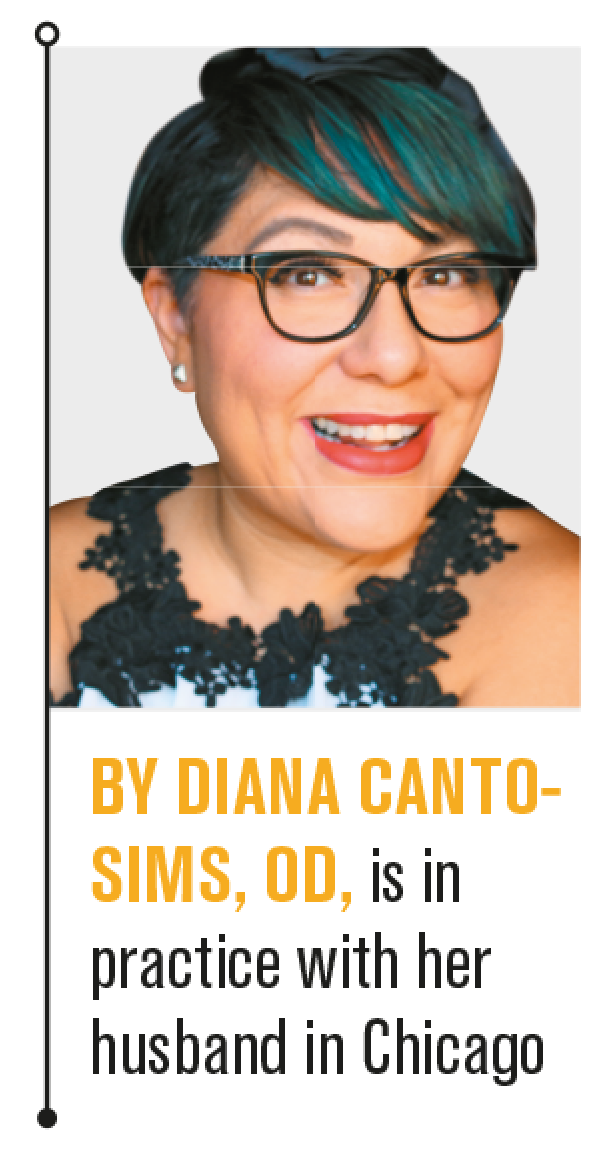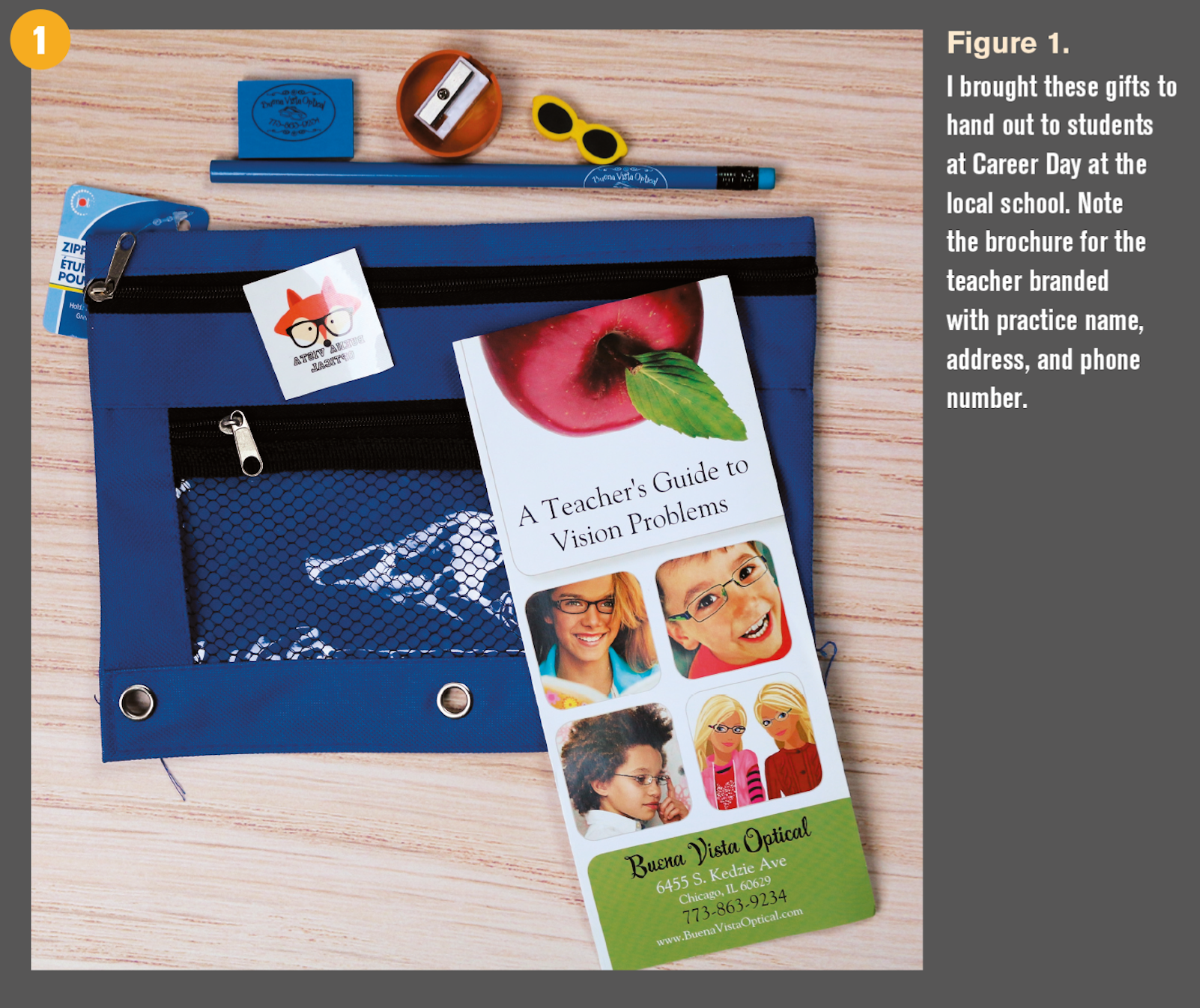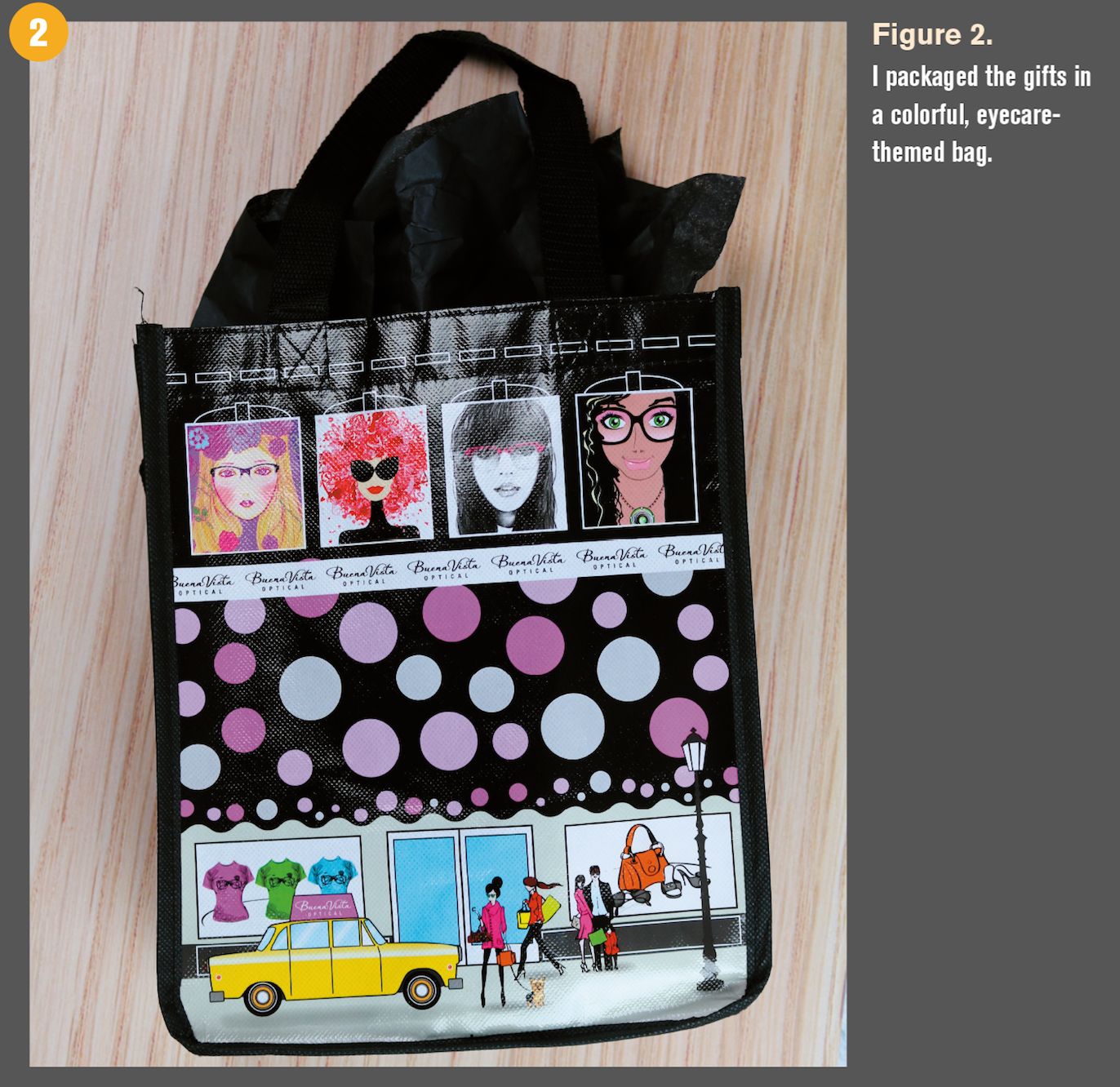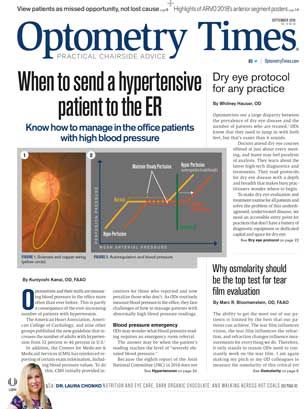3 strategies to grow your practice




As optometrists, finding noteworthy ways to grow the practice and attract more patients can sometimes be a challenge. ODs are so busy seeing patients and juggling the everyday challenges of owning a practice that they overlook creative ways to attract more patients.
Most ODs don’t have thousands of dollars available for marketing. ODs ask for referrals, but sometimes this is not enough to fill schedules. There are ways ODs can welcome more patients into their practices that surprisingly will not break the bank or put a hole in the marketing budget.
In my experience, creating a rapport and relating to patients is the number-one way to bring more loyal patients into the practice. But ODs are busy seeing patients all day-how to find the time to do this?
Here are three easy tips to help ODs create that rapport and bring more patients into their practice.
1. Present at Career Day
Connecting with your community is a great way to educate people and expand the list of potential patients. Career day at the local school does just that: Students come home from school excited after career day, and they tell their parents.
Parents will not only appreciate the information you shared, but they will remember you as the expert when they need an eye doctor.
Career day is not the place to show off and use complicated lingo if the audience is second-graders.
For example, I love introducing myself in a way that is memorable and a little humorous: “Hello! My name is Dr. Diana Canto-Sims, and I am your friendly neighborhood eyeball doctor.”
Such an introduction makes even the teacher giggle, and you establish yourself as the “go-to” eye doctor for the teacher.
Related: Define your product, grow your practice
Another efficient way to tackle career day and take advantage of your captive audience of students (and households) in less than an hour or two is to prepare a tray with a select group of diverse frames.
I include specialty frames like sports frames, safety frames (with the side shields attached), swimming goggles, cute colorful frames, sparkly frames, kids’ sunglasses, and branded frames that kids like.
The tray is passed around while I talk about the importance of vision in learning, signs that you may need an eye exam, the importance of a yearly eye exam and, of course, about being an optometrist.
The kids absolutely love it, but how to reach the rest of the household? Bring all the students a meaningful gift. I mention the gift during the talk because I want their attention. The cost of the gift is not high-it runs me only pennies each.
For example, I give a branded folder that students can reuse for school and branded pencils and erasers that they will see and use on a daily basis in class and at home.
Inside the folder, I insert a brochure designed for the parent to read about the importance of vision in learning, checking for signs that their child may need an eye exam, and a call to action such as, “Call us to make an appointment today.” (See Figures 1 and 2.)
Make sure you give students something meaningful and relatable to them. A business card with a flyer is just not going cut it.
What happens after career day is glorious.
Children come home excited about their new branded folders and tell their parents about how awesome it was to hear their local eye doctor talk about eyeballs and how eyes are important when learning.
Related: How I am embracing the medical model in optometry
They repeat everything, I say including the importance of a yearly eye exam, how school vision screenings are not eye exams, and how essential it is for everyone in their family to have a yearly eye exam.
Remember to be fun and use words children understand. Above all, remember to smile, smile, and smile-no one wants to see a grim eye doctor.
You may think it’s a waste of time to spend two hours with second-graders. However, in two hours you can reach more than 25+ families.
2. Visit your local pediatrician or MD
Fostering relationships with other physicians in your area is another way to grow your practice. Asking them to refer their patients to your practice as the primary eyecare provider is key.
Remember that referrals are a two-way street. Other doctors will be interested in referring patients to you if have been referring patients their way.
I suggest using a philosophy called “give, give, get.” You give something without expecting anything in return. Then, give again without expecting anything in return, and eventually, you will get. If you do not get, do not offer a third give.
After 12 months, run referral statistics. Move on if a particular practitioner has not referred any patients after two gives. Don’t expect everyone to give back every time you give. Shift that mentality, and when you do, the energy behind your give will be fruitful.
Taking other doctors to lunch or dinner to exchange business cards likely is not the most time effective or economical way to connect. A lunch meeting will not be as impactful or memorable.
However, physicians’ staff plays an important role when it comes to referring patients. Instead of sending pizza to the office staff, our office sends practical and promotional gifts.
We purchase high-end promotional items such as Yeti stainless steel, double-insulated bottles, high-end coffee mugs, ergonomic mouse pads, colorful Post-it note blocks, and elegant pens.
All items are beautifully branded with practice name, phone number, and website.
The goal is for your practice’s name to be everywhere in their office every day of the year. When a staffer gets coffee, when he hydrates between patients, when she enters data in the computer, they see and remember your practice information so when a patient asks for a referral for a primary eyecare doctor, they will remember you.3. Create mailings to “sneezer” patients
“Sneezers” are patients who talk about how amazing you are to everyone and refer you to friends and family for nothing in return.
Seth Godin uses this term in his book Ideavirus to describe the incredible power of social media in the hands of those who influence others. “Sneezers are at the core of an ideavirus. Sneezers are the ones who when they tell 10 or 20 or 100 people about an idea-people believe them,” he writes.
Sneezer patients come in every year-sometimes more often-and purchase multiple pairs of eyewear and sun wear. Then, they tell everyone about you.
These are the patients to whom you send a special mailing. Our office alternates between a postcard mailing and a beautiful invitation with an offer inside.
The elegant invite is more expensive, but we use these for elite patients. One patient purchases 13 to 15 pairs of complete eyeglasses and sunglasses every time she comes in. We began sending her invites more often, and now she comes three to four times a year.
Design postcards at sites such as Canva or Vistaprint. I like postcards because they are easy to read when patients get their mail. Postcards tend to linger around the house, and family and friends see them.
In the era of digital notifications, a postcard carries weight. People will delete text messages, voicemails, and emails, but a mailing is a physical piece of cardstock that lingers in the household for at least 24 hours.
Every time a patient sees the mailing, she remembers the practice and the offer. Include a call-to-action on the postcard, such as, “Call us today for a special styling session” or “Stop by to see our new styles from XYZ.”
Plant the seeds
It is important to see these tips as seeds you are planting to grow your practice. The more seeds you plant daily, the more will sprout.
Career Day is an hour or two and an opportunity to plant many seeds. Connecting with another physician is another seed. Every mailing delivered to your target patient is also a seed.
Don’t expect every seed to sprout. Some seeds will scatter, and some will flourish. Keep planting and nurturing to help your practice grow.

Newsletter
Want more insights like this? Subscribe to Optometry Times and get clinical pearls and practice tips delivered straight to your inbox.